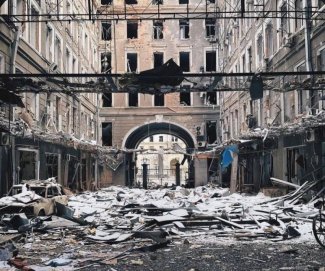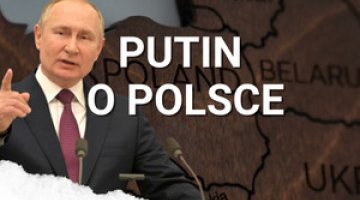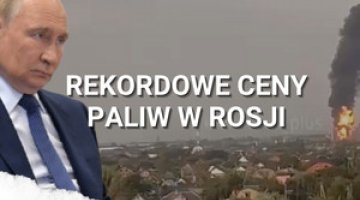The Russian attack on Ukraine: day 20

Over the last 24 hours, the Ukrainian Armed Forces have carried out “devastating attacks on groups of the occupier’s troops in the temporarily occupied territories” and proceeded to counterattack in selected directions; in Kyiv’s opinion, this action will “radically change the fighting parties’ situation”. Due to destruction or loss of combat capability, the enemy is reported to have lost up to 40% of the sub-units involved in the aggression against Ukraine. At the same time, Russian troops continued air and missile strikes, and are still shelling infrastructure and housing in Ukrainian cities. Apart from the previous combat areas, for the first time civilian infrastructure in Berdychiv, Vinnytsya and Zaporizhzhia were hit. The Russians’ main focus is on strengthening and holding the positions and areas of defence they have already occupied, although they are continuing to prosecute offensive actions in southern and eastern Ukraine.
The Armed Forces of Ukraine have begun mobilising the second line of the reserves (the soldiers called up first have been distributed among the fighting units). This will also cover those persons available for compulsory mobilisation who have not already completed their compulsory military service (they are to be directed to training centres). Temporarily, women who would have been called up in ‘special cases’ (mainly medical service and communications specialists) have been released from the compulsory call-up. Conscripted soldiers will be sent to fight if new areas of the country become involved in the hostilities.
In the vicinity of Kyiv, the aggressor continued bombing and shelling; periodic clashes and exchanges of fire have mainly taken place in the Bucha, Vyshhorod and Brovary regions. These were less severe than in the previous days, and the Russians focused on building up their forces. The Russian attack from the north was stopped 10 km from the borders of Kyiv. At night, the defenders conducted offensive actions and inflicted losses on enemy troops in an artillery exchange. Non-contact activities also dominated in the Severny direction, and there were sporadic clashes. The attacking Russian forces were detained in the north-eastern outskirts of Chernihiv. Also in the Slobodka direction, apart from bombing and shelling, the Russians mainly carried out blocking operations (around the cities of Sumy and Izyum) and built up their forces. The defenders repelled an attack on Kharkiv.
In the Donetsk direction, the Russian troops took up positions around the town of Popasna, which had come under heavy shelling in the previous days, and are also building up reinforcements on the western outskirts of Rubizhne. The Russians, having suffered losses, were unable to break through the Ukrainian defence in the area of Lisichansk and Severodonetsk, as well as in Mariupol. Localities in the Ukrainian-controlled parts of the Luhansk and Donetsk oblasts are constantly being bombed and shelled (Mariupol was also shelled from the sea for the first time).
In the Southern Buzhany direction, Russian units approached Nikopol (rocket artillery shelled the western outskirts of the city), but the aggressor have not entered Dnipropetrovsk oblast. The Russians have continued their approach towards Kryvyi Rih, and are tightening their encirclement of Mykolayiv. Ukrainian forces carried out an effective attack striking within an aggressor group, bombing the airfield in Chornobayivka near Kherson (7 helicopters were destroyed). The authorities in Odessa are warning that a group of ships operating in the north-western part of the Black Sea may attempt a landing. The city and its vicinity have been bombed; the Russians have attempted to identify and destroy the remaining elements of the air defence system in Odessa oblast.
According to data from the General Staff of Ukraine, the total estimated Russian losses so far amount to around 13,800 soldiers (killed, wounded or, captured), 430 tanks, 1375 armoured vehicles, 84 planes, 108 helicopters, 70 multi-rocket launchers, 43 air defence systems, 190 artillery systems, 819 wheeled vehicles, 11 unmanned aerial vehicles, 60 fuel tanks, and 3 seagoing vessels.
The Russian defence ministry claims that since the beginning of the conflict Ukrainian losses have amounted to 111 aircraft, 68 helicopters and 160 drones. It also stated that 159 anti-aircraft missile systems, 1353 tanks and other armoured fighting vehicles, 129 multi-guided missile systems, 493 guns & mortars and 1096 wheeled vehicles have been destroyed.
Foreign volunteers will allegedly arrive in the so-called Donetsk People’s Republic, the number of which is estimated by the authorities there at 20,000. This is another signal, after the report of mercenaries being recruited in Syria, that the Russian command has decided to strengthen its forces with formations made up of foreign fighters.
The occupiers are still brutally pacifying the towns they have occupied, and murders & rapes are taking place. The Russian military have looted the Chernobyl nuclear power plant (stealing computer equipment and protective clothing). In Kherson oblast, the Russians are making unsuccessful attempts to create a local ‘people’s militia’.
Kyiv is preparing to defend itself against a land attack. In order to raise the command level of the Ukrainian forces gathered in the capital, President Volodymyr Zelensky has appointed the current commander of the Joint Force Operation, Oleksandr Pavlyuk, to be the new head of the Kyiv Regional Military Administration. The appointment of an experienced military man to a formal administrative position means the effective appointment of the commander for the defence of Kyiv. The mayor of the city has said that it is ready to defend itself.
The Security Service of Ukraine is continuing its counterintelligence operation against Russian agents. On 14 and 15 March, 60 collaborators with the Russian special services were captured and 20 hostile sabotage & reconnaissance groups were neutralised, which proves that Ukrainian counter-intelligence units have been highly active. Most of the persons detained had provided information on the location of military and territorial defence units.
On 15 March, the Ukrainian parliament extended martial law until 25 April, and adopted an act allowing for working hours in businesses to be extended to 6 days and 60 hours a week. In addition, President Zelensky signed a law on criminal liability (up to 15 years’ imprisonment) for cooperation with Russia, the occupation administration and its armed forces, as well as a law on counteracting Russian propaganda. The last document includes a ban on denying Russia’s aggression towards Ukraine (since 2014) in the media, or calling the conflict in Donbas a civil war. The law also provides for the possibility of liquidating political parties, religious and social organisations whose actions challenge the independence of Ukraine, or call for subversion of the constitutional order, or the violation of its sovereignty or integrity. The powers of the police have been expanded: police officers can now carry out tasks connected with territorial defence, anti-mining operations and the supervision of POWs.
On 15 March, seven of the nine agreed humanitarian corridors were used. The Ukrainian side confirmed that about 20,000 people had left Mariupol, and 8500 from the Sumy region. The Russians once again blocked the passage of a humanitarian convoy headed via Berdyansk to Mariupol. On 16 March, the planned evacuation from the town of Izyum was disrupted by artillery fire. Evacuation trains are still departing from Kyiv.
According to the UN, 3 million refugees have left Ukraine, of which 1.4 million are children and 157,000 are persons with other than Ukrainian citizenship. According to an announcement by the Polish Border Guard, 1.89 million people have crossed into Poland from Ukraine since the beginning of the war. On 15 March, 66,600 entered the country.
According to Prime Minister Denys Shmyhal, Ukrainian losses as a result of the war amount to US$565 billion. In turn, the head of the Interior Ministry Denys Monastyrski calculated that 3500 infrastructure facilities, including 2700 residential buildings, 72 schools, 21 hospitals, 28 churches and 165 critical infrastructure facilities (power plants, transmission networks and gas pipelines) have been destroyed. According to the president’s economic adviser Oleh Ustenko, US$300 billion of the Central Bank of Russia’s foreign exchange reserves which have been frozen by Western sanctions will be earmarked for reparations for Ukraine in a special fund. US President Joe Biden signed a bill to grant Ukraine financial aid to the tune of US$13.6 billion. These funds are to be allocated to defensive weapons and support for refugees, both in Ukraine and abroad.
In the ongoing negotiations, both sides have suggested that an agreement on a ceasefire could be reached, but this is conditional on their acceptance of the political agreement. The Ukrainian side has still not revealed its position on any possible concessions, hoping that delays in the Russian army’s progress will affect their decision on a truce. At the same time, President Zelenskiy said that Ukraine did not intend to become a NATO member, and that the Ukrainian people should only count on themselves. He appealed once again for the closure of the airspace over Ukraine. In turn Oleksiy Danilov, the secretary of the National Security and Defence Council, said that Ukraine needs a new defence alliance, which should include a country with nuclear weapons; he mentioned the United Kingdom in this context.
Commentary
• Both sides are using the slowdown of the Russian offensive actions to regroup and strengthen their units. The aggressor’s movements back towards the Ukrainian border are relatively small-scale (apart from internal security formations and mercenary forces, the movement of only about five tactical battalion groups has been confirmed); they indicate that the Russians are not as yet trying to increase their numbers in the operation area, but are only making up their losses. The announcement that foreign mercenaries will be involved in the hostilities is an exception; the aim of this move is to reduce losses among the Russians’ own men, in conditions of strong resistance from Ukrainian troops, and to support the units involved in pacifying the occupied territories.
• The actions of the Ukrainian side, which has called up its second reserve echelon – involving men subject to the compulsory call-up who have no military training – indicate that the defence is to be total, and the resistance massive. The issue of arming and equipping of newly called-up soldiers for combat remains to be solved; it should be assumed that they will mainly receive light weapons and small arms, largely coming from the support offered by NATO countries.
• There is still no official confirmation of any progress being made in the Russian-Ukrainian negotiations, which are still being held at the working-group level. Nevertheless, Zelenskiy’s words that Ukraine will not be a NATO member could be seen as preparing public opinion to accept one of the Russian conditions (neutral status). However, it could also be seen as a trick to signal an alleged concession, albeit one which will not be enough for the Kremlin. The Russian tactics is not likely to change, although there are signs that they have rowed back on the scale of their demands (for example, by calling for neutrality instead of demilitarisation). By increasing casualties among the civilian population, Putin continues to seek Kyiv’s capitulation and consent to the subjugation of Ukraine. In the areas occupied by the Russians, brutal pacifications are taking place due to the occupier’s rising frustration at the resistance and unwillingness to cooperate displayed by the local communities.





